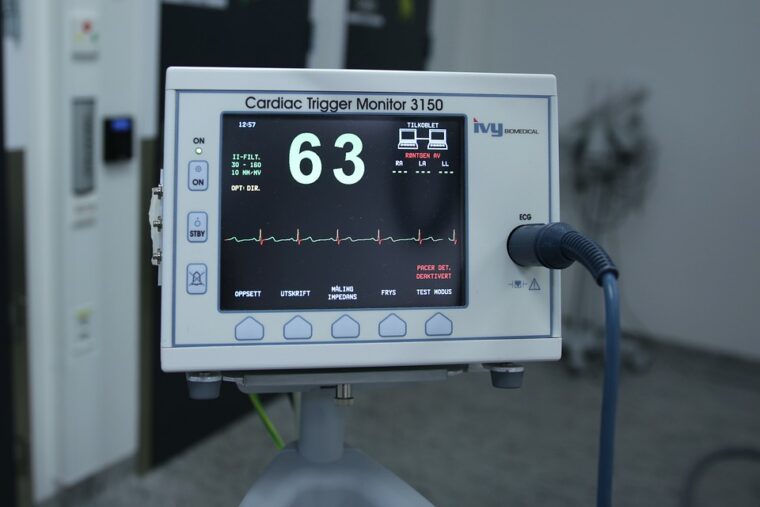Keeping track of our bodies is a must, and knowing how our organs react to different external and internal factors can help us increase our health and deal with stressful situations a lot easier. Even though you cannot keep track of everything on your own, there are things that you can do to measure the stress you have and know when you need to work on your health.
Heart rate variability is something that people are now learning to be aware of, and we all want to know how to read the measurements and how to track the health of our hearts. Keep on reading if you want to learn some important facts that you need to know about HRV, starting from what is heart rate variability, up to the ways you can measure and track it, and also how to improve it and help your body.

1. What is HRV?
The first thing we are going to talk about is what is heart rate variability and why is it important. The easiest way to explain this is that this variation shows the time passed between two heartbeats. We need to know and measure this if we want to know if there is an underlying condition that we are not aware of, or if we just want to check and see if we are healthy.
Sometimes we may feel like everything is okay, but in reality, our body may be sending you signals that we are not as healthy as we think we are. When you do the regular measurements, you will see if there is an imbalance with the ANS, you can detect your stress level, and you will see if your body reacts differently to any specific emotions or situations.
You can use this measurement to increase your self-awareness and to know when you need to be aware of your surroundings and change things about your lifestyle, and when you are doing things that are good for yourself.
2. When is the variation bigger?
Now that you know what is heart rate variability, let’s see what is normal for you depending on your age and health, and what the numbers that you can get mean.
When your body is under stress, and when you are leading an unhealthy lifestyle, the variation is going to be lower, which means there is less time between two heartbeats. On the other hand, if you take proper care of yourself, and if you are relaxed and happy, the variation is going to be bigger. Note that there are things you can do to improve it, so continue reading if you know what you can do to increase the time between two beats.

3. How do you check it?
To know if you are healthy and if you need to change your habits, you need to know how you can measure and track this information. The easiest way to do that is to ask your GP for help and ask them to track it for you. Nevertheless, this does not mean that there are no other ways for you to measure it on your own.
On places like Welltory.com, you can see that analyzing and checking your HRV is something that has become popular amongst people all around the world, and to make things simpler and easier for everyone, there are applications that can help you check it on your own.
Platforms that can help you measure and track your variation can be found on Appstore, the platform is easy to install and can help you get this data without too much trouble.
4. What is a normal HRV?
The answer to this question is a little complicated and it all depends on your age, health status, as well as your overall habits, and your weight. Note that you don’t have to focus on these numbers too much, but it is always better to know which is the range that you need to be in so that your heart stays healthy.
It is said that people who are older are going to have a smaller variation, while people who are young and healthy are going to experience a bigger one. People who are in their early to mid-twenties are going to have an HRV that is between 50 and 100, whereas people who are older than 60 should expect a variability between 20 and 50.

5. How can you improve it?
The last thing we are going to talk about is how to increase HRV and we will tell you how you can improve the variation and with that, improve your health.
You should try to do some HRV training and you should also train your body and your mind. It is said that with proper exercise you will be able to improve it, but you should never overdo it because that way you risk doing more harm than good. The best thing you can do for your body is give it a habit and stick to the schedule. Try to wake up at the same time, train at the same time, have your meals following the same schedule and try to go to sleep every day around the same time. All of these things will help you increase and stabilize your heart rate variability.
You need to steer away from unhealthy habits like drinking too much coffee, smoking, or drinking a lot of alcohol. Studies have suggested that your HRV will be affected for five days after just one night out, so try to pay attention to your unhealthy habits.
Don’t forget that you can always improve the variation by following a proper diet, having a healthy sleep regimen, and drinking enough water every day. Doing these things will help you feel a lot better and they are going to stabilize your heart rate.
These are some of the things that you need to know about your heart rate variability and if you have any additional questions or concerns, you can always talk to your GP and ask them to give you more information about it. Know that by tracking it you can know if you are helping your body, or if you need to change something about your habits.
